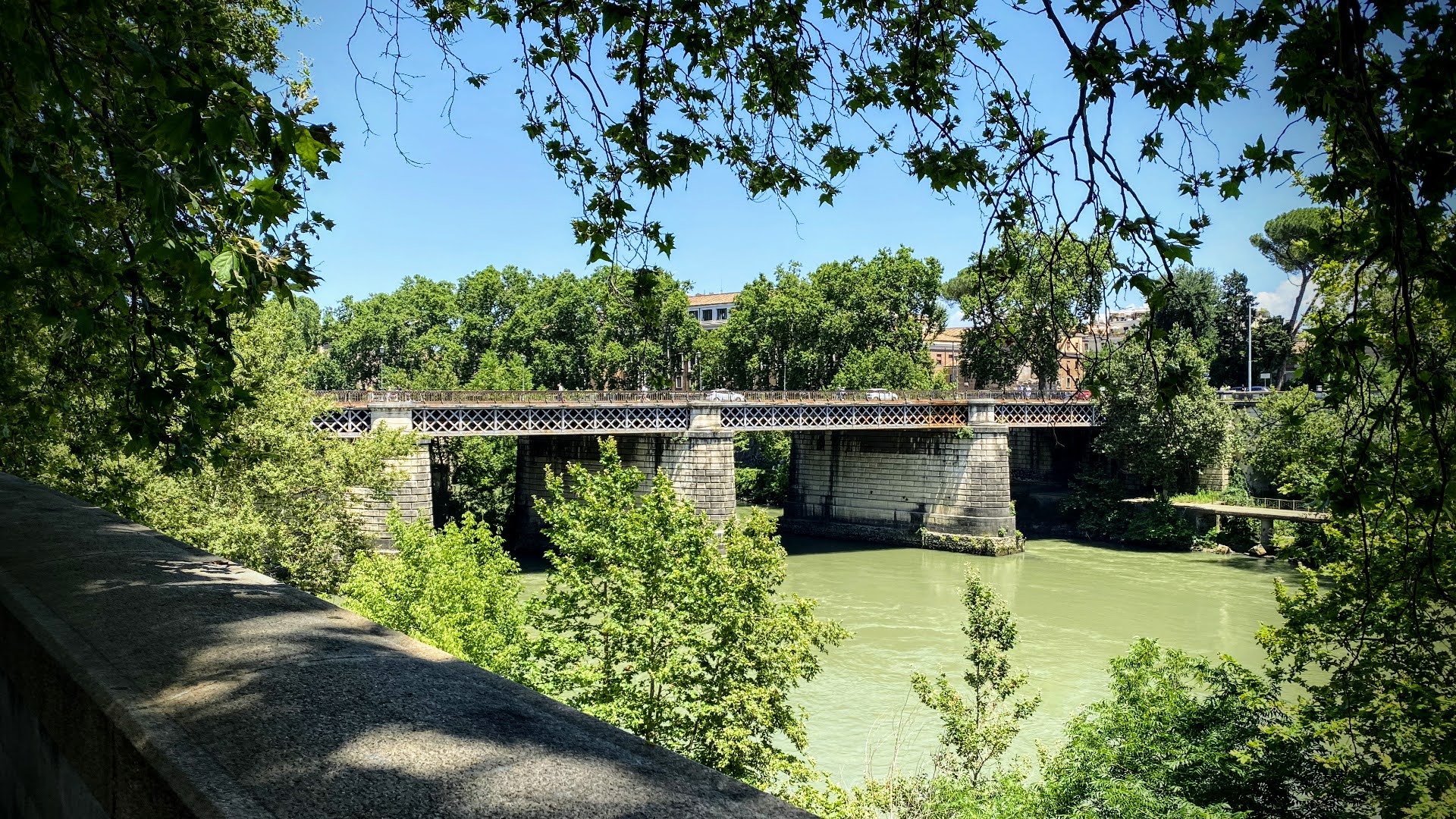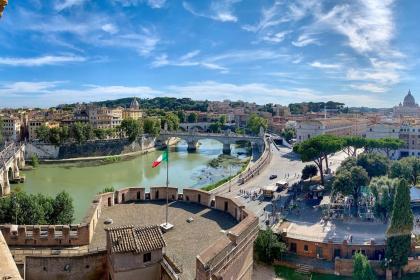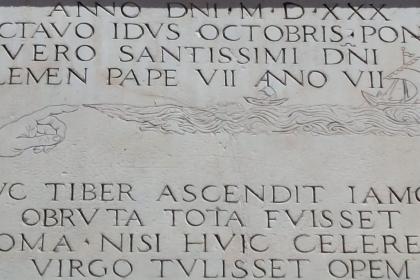
During the second half of the nineteenth century, an urgent need arose for a bridge that could serve the areas formerly connected by the very ancient Pons Aemilius (Broken Bridge) whose remains still stand today as the millenary guardians of a troubled history made up of countless collapses and reconstructions.
The Palatino Bridge was therefore built between 1886 and 1890 to a design by engineer Angelo Vescovali in collaboration with a Belgian company specialised in iron bridges and the help of the Officina dell'Impresa Industriale Italiana, which took care of the metal parts.
Its structure is essential, lacking the imposing arches that characterise most bridges in Rome, and devoid of large decorations, except for the metal grid that links the various sections with elegant diamond-shaped elements. More than aesthetics, therefore, it was practicality that won the day: the Palatino Bridge is in fact one of the city's earliest examples of functional architecture and a demonstration of great engineering skill at a point on the river where even the genius of the ancient Romans had repeatedly failed.
Just over 155 metres long and about 19 metres wide, the bridge joins Lungotevere Ripa with Lungotevere Aventino, in the rioni Ripa and Trastevere. It consists of five spans interspersed with four massive masonry pillars lined with travertine ashlars supporting a metal footbridge that fits, at either end, into the colossal walls erected after the impressive flood of 1870 to protect Rome from future flooding.
On the left side of the bridge, at the Lungotevere Aventino, is the Cloaca Maxima, the largest sewer complex of the Roman era, which, starting from the Suburra, flowed nearby.
An old Roman habit (fortunately no longer practised today) links its memory to the bridge: the 'partita a rocci' or 'sassaiola', the dense throwing of stones that saw the inhabitants of the rioni Testaccio and Trastevere, who had chosen Palatino Bridge for their battles, challenge each other. Other stone-throwers raged on Sant'Angelo Bridge between the Borghiciani, residents of the rione Borgo, and the Ponticiani, residents of the rione Ponte, or at Campo Vaccino, where the rioni Trastevere and Monti faced each other.
A curiosity: Palatino Bridge is also known as the 'English bridge' or the 'bridge of the English' because of the reversed direction of traffic compared to the normal way of travelling on Rome's roads and bridges.
Photo turismoroma
Over the Tiber: discovering Rome's seven most iconic bridges

An itinerary between millenary architectures and daring contemporary visions
 Condividi
Condividi
Flood plaques

The Forum Boarium

 Condividi
Condividi
Information
 Condividi
Condividi
Location
To find out about all accessibility services, visit the Rome accessible section.











































